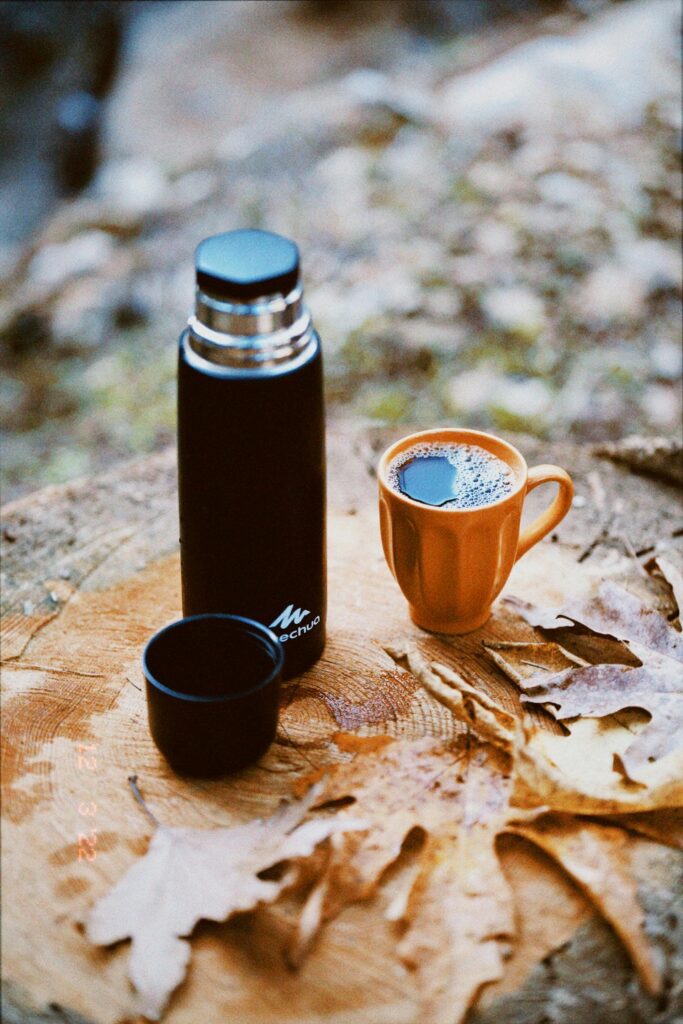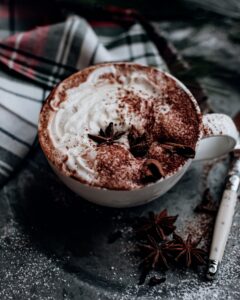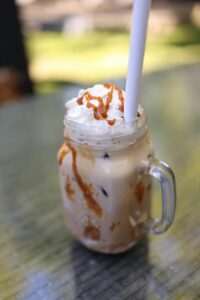Ever had that deep coffee craving hit… only to find your machine is out cold, missing, or miles away? We’ve all been there—tired eyes, no coffee, and zero fancy gear in sight.
Here’s the good news: you don’t need a machine to make a solid cup. Seriously. With a few basics and a little know-how, you can still brew something bold, rich, and comforting.
In this post, you’ll learn five super simple, budget-friendly ways to brew coffee—no machine required.
These methods are perfect for camping, travel, emergencies… or just when life throws a coffee curveball. Let’s dive in!
What You’ll Need (Basic Equipment List)
Before we jump into the brewing methods, let’s talk gear. Don’t worry because you won’t need anything fancy. If you’ve got a kitchen (or even a campfire), you’re halfway there.
1. Kettle or Pot (to boil water)
You need something to heat your water. A standard kettle works great. No kettle? A regular saucepan or pot does the trick. Even a microwave-safe cup in a pinch.
Just aim for hot but not boiling water (around 195–205°F or 90–96°C if you’re feeling precise).
2. Coffee Grounds (Medium to Coarse Grind)
Skip the fine espresso grind. For most no-machine methods, a medium to coarse grind gives the best flavor and less grit. Pre-ground works, but freshly ground beans? Game changer.
Tip: No grinder? Toss beans in a zip-top bag and crush with a rolling pin or the bottom of a jar. Primitive? Yes. Effective? Also yes.
3. Spoon or Stir Stick
You’ll need something to stir. A spoon, a chopstick, or even a clean butter knife will work. It helps the coffee bloom and mix properly, especially in methods like cowboy coffee or DIY French press.
4. Mug or Cup
Any heatproof cup or mug will do. Ceramic, glass, enamel—whatever can handle hot liquid without cracking under pressure. This is your coffee’s final destination, so make it a good one.
5. Optional (But Super Handy) Tools
Here’s where you can get creative:
- Strainer or fine mesh sieve – great for filtering out grounds.
- Paper towel or coffee filter – perfect for DIY pour overs or coffee bags.
- Cheesecloth – flexible and reusable filter option.
- Mason jar or lidded container – especially useful for cold brew or faux French press.
- Rubber band or string – handy for tying up makeshift coffee bags.
You don’t need everything on this list.
But the more you have, the smoother your no-machine brew will be. Think of it like building a basic coffee survival kit.
Method 1: Cowboy Coffee
Cowboy coffee is as old-school as it gets. No filters. No fancy gadgets. Just hot water, ground coffee, and a pot over a flame or stove if you’re feeling less wild west.
It’s the method pioneers, ranchers, and yes—cowboys—used to jumpstart their mornings out on the trail.
It’s bold. It’s simple. It gets the job done.
Ingredients & Tools
- 2 tablespoons coarsely ground coffee
- 8 ounces (1 cup) water
- Small pot, kettle, or saucepan
- Spoon
- Mug
- Optional: a splash of cold water to help grounds settle
Step-by-Step Process
- Boil the water: Bring 1 cup of water to a rolling boil in your pot or kettle.
- Add the coffee grounds: Once boiling, remove the pot from heat. Add the 2 tablespoons of coffee grounds directly into the water.
- Stir it up: Give it a good stir with your spoon. This helps saturate all the grounds.
- Let it steep: Let the coffee sit for about 4 minutes. The longer it steeps, the stronger it gets—just don’t go overboard or you’ll wrestle with bitterness.
- Settle the grounds: After steeping, pour a splash of cold water over the top. This helps the grounds sink to the bottom. Old trick, still works like a charm.
- Pour carefully: Slowly pour the coffee into your mug. Try not to disturb the settled grounds. A steady hand wins here.
Pros & Cons
Pros:
- No special equipment needed
- Fast and easy to make anywhere
- Perfect for camping or emergencies
Cons:
- Grit may sneak into your cup
- Harder to control strength or bitterness
- Not ideal for fine-ground coffee
Taste Profile
Cowboy coffee is strong, bold, and a little rough around the edges, like a black-and-white western movie in a mug.
It’s not delicate or refined, but it delivers that caffeine kick with attitude.
Expect full-bodied flavor, a touch of bitterness, and a hint of wild freedom.
Method 2: Coffee Bag Hack (DIY Tea Bag Style)
Think of this as the MacGyver method of coffee brewing. No machine? No problem. You can make your own “coffee tea bag” with just a filter or cheesecloth.
It’s neat, portable, and mess-free—like turning your kitchen into a mini café without the cleanup drama.
This trick is perfect when you’re traveling, camping, or just too tired to deal with extra dishes.
What You Need
- 2 tablespoons medium-ground coffee
- 1 coffee filter (or a small piece of cheesecloth)
- String or dental floss (unscented!) to tie it
- 1 cup (8 ounces) hot water
- Mug
- Spoon (optional, for stirring)
Step-by-Step
- Make your “coffee bag.”
Lay your coffee filter flat and scoop 2 tablespoons of coffee grounds into the center. Gather the edges together and tie it securely with a string or a piece of clean, unscented floss. If you’re using cheesecloth, wrap it up the same way—you’re aiming for a pouch that won’t leak grounds. - Heat your water.
Bring 1 cup of water to just below boiling. You want it hot enough to extract flavor but not scorching. - Steep it like tea.
Drop your homemade coffee bag into the mug. Pour the hot water over it, making sure it’s fully submerged. Let it steep for about 4 to 5 minutes—a little longer if you like it bold. - Remove and enjoy.
Take out the bag and give it a gentle squeeze with your spoon to get that last bit of flavor (careful, it’s hot). Then sip and smile—you just brewed coffee the clever way.
Great for Travel or Emergencies
This method shines when convenience matters most. You can pre-make several coffee bags and toss them in a zip-top bag for road trips, camping, or even the office.
All you’ll ever need is hot water. It’s the kind of backup plan that keeps you caffeinated and sane when machines betray you.
Minimal Cleanup Bonus
No filters to rinse. No grounds in the sink. No coffee pot to scrub. Just a single-use bag you can toss away when done. It’s the easiest “brew and go” setup you’ll ever try.
Method 3: Improvised Pour Over
No pour-over cone? No problem. You can MacGyver your way to a smooth, café-style cup using a strainer, paper towel, or even a mesh sieve.
It’s not going to win any barista awards, but it will get you a clean, flavorful brew without much fuss.
This method mimics the classic pour-over but with stuff you already have in your kitchen. It’s quick, effective, and if done right, surprisingly delicious.
Setup: Your DIY Filter Station
Here’s what you’ll need:
- 2 tablespoons medium-ground coffee
- 1 cup (8 ounces) hot water
- Paper towel, clean dish towel, or cheesecloth
- A fine mesh strainer or even a small colander
- A mug or cup to catch the coffee
- Spoon or ladle (optional, but helpful for pouring slowly)
Place your strainer over your mug. Line it with the paper towel or cloth.
Make sure the towel doesn’t tear or sag too much.
You’re basically creating a homemade filter basket.
Step-by-Step Pour-Over-Style Brewing
- Heat the water
Bring 1 cup of water to just under boiling—around 200°F (93°C) is ideal. Let it sit for 30 seconds if it’s boiling. - Add the grounds
Place 2 tablespoons of ground coffee into your makeshift filter. - Start pouring slowly
Begin by pouring just a little hot water over the grounds—just enough to saturate them. This step is called the “bloom.” Wait 30 seconds. It lets gas escape and helps improve flavor. - Continue pouring in circles
Slowly pour the rest of the water in small amounts, moving in a circular motion. Don’t flood it. Go slow and steady. This should take 2–3 minutes total. - Let it drip and settle
Once all the water has passed through, remove the filter setup and admire your handiwork. You’ve made pour-over coffee with kitchen scraps. Respect.
Tips to Control Water Flow and Avoid Bitterness
- Go slow. Fast pours = under-extraction (weak, sour coffee). Slow pours = balanced flavor.
- Don’t dump. Gently pour in stages to keep the grounds immersed, not overwhelmed.
- Use medium grind. Too fine and it clogs the filter. Too coarse and it tastes like coffee-flavored water.
- Pre-wet the filter. If using paper towels or cloth, pour a little hot water through it first to remove any papery or soapy flavors.
This method gives you a clean, crisp cup with more clarity than cowboy coffee and less cleanup than a French press.
It’s especially great for folks who like their coffee smooth and straightforward.
Method 4: Cold Brew (No Heat Needed!)
Cold brew is the cool kid of the coffee world because its smooth, mellow, and ridiculously easy to make. No heat, no rush, just coffee and time doing their thing.
If you’re into low-acid coffee with a naturally sweet finish, cold brew is your best friend.
It’s the kind of brew you can set and forget. Perfect for hot days, busy mornings, or anyone who doesn’t want to mess with boiling water before caffeine kicks in.
Perfect for Hot Days or Lazy Prep
No stove. No steam. No stress. Cold brew doesn’t just save energy but it saves mornings. You prep it the night before, toss it in the fridge, and wake up to coffee that’s ready when you are.
It’s also great for batching. Make one big jar, and you’ve got a few days of caffeine in the bank.
Ingredients & Ratio
- 1/2 cup coarsely ground coffee (about 30–35g)
- 2 cups cold or room temperature water (480ml)
- A jar, French press, or pitcher with a lid
- A fine mesh strainer, cheesecloth, or coffee filter
- A spoon for stirring
This 1:4 ratio makes a strong concentrate. You can dilute it with water, milk, or ice when serving.
Steeping Time and Filter Method
- Combine coffee and water
Add 1/2 cup of coffee to your jar or container. Pour in 2 cups of water. Stir gently to wet all the grounds. - Cover and steep
Seal it up and let it sit at room temperature or in the fridge for 12 to 18 hours. The longer it sits, the stronger it gets. - Strain it well
Pour the mixture through a cheesecloth, coffee filter, or fine mesh strainer into a clean jar. If you want zero grit, double-filter it. - Serve or store
You can drink it as is, but most people dilute it 1:1 with water, milk, or your favorite creamer. Serve over ice for that iced-coffee bliss.
Bonus: Make Ahead and Store in Fridge
Cold brew stays fresh in the fridge for up to 1 week. Store it in a sealed jar or bottle and you’re always just a pour away from a smooth sip. It’s also great for coffee smoothies, cocktails, or even baking.
Method 5: The French Press Hack
No French press? No sweat. You can fake it with a mason jar, a spoon, and a little patience.
This method mimics the classic press-style brew without needing the actual gadget. It’s low-tech, low-effort, and still delivers that rich, bold flavor people love from a French press.
What You’ll Need
- 2 tablespoons coarsely ground coffee
- 1 cup (8 ounces) hot water
- Mason jar, heatproof mug, or glass
- Spoon (for stirring and “pressing”)
- Second cup or container (for pouring)
- Optional: fine mesh strainer or cheesecloth
Step-by-Step: Mimic the Press
- Add coffee to jar
Scoop 2 tablespoons of coarse ground coffee into your mason jar or mug. - Pour in hot water
Add 1 cup of hot (but not boiling) water—around 200°F (93°C). Let the coffee bloom for about 30 seconds, then give it a quick stir. - Steep it like a pro
Cover (loosely) and let it steep for 4 minutes. Want it stronger? Go up to 6 minutes, but no more unless you like chewing your coffee. - Let the grounds settle
After steeping, let it sit for another 30 seconds to 1 minute. The heavier grounds will drop to the bottom naturally. - Slow pour to serve
Slowly pour the coffee into a second mug, leaving the sludge behind. If you’re extra cautious, pour it through a mesh strainer or cheesecloth to catch any floaters.
Tips to Avoid Grit in Your Cup
- Use coarse grounds. This reduces the amount of fine sediment.
- Let it settle. Don’t rush—give the grounds time to sink.
- Tilt and pour gently. Think steady hands and slow motion, not a waterfall.
- Optional filter. A fine strainer or double-layer cheesecloth catches leftover grit if you’re picky about texture.
This hack may not have the satisfying plunge of a real French press, but the flavor is surprisingly close. Deep, smooth, and a bit rustic—like a Sunday morning without the rush.
Tips for Better No-Machine Coffee
Just because you’re brewing without a machine doesn’t mean you have to settle for bad coffee. A few small tweaks can take your cup from “meh” to “more please.”
Whether you’re on a camping trip, surviving a power outage, or just experimenting in your kitchen, these tips will help you brew smarter, not harder.
Use Quality, Freshly Ground Beans
Start with good beans. Old, stale grounds will taste like disappointment in a mug—no matter how clever your brewing method is. If you can, grind your beans right before brewing.
Go for a medium to coarse grind for most of these no-machine hacks. If it looks like beach sand, you’re on the right track.
Stick to Proper Ratios
Too strong? You’ll be wide-eyed and regretting life decisions. Too weak? It’ll taste like brown water. The sweet spot is usually 1 to 2 tablespoons of ground coffee per 6 ounces of water.
Adjust to your taste, but this is a solid place to start. More coffee = bolder. Less coffee = lighter.
Heat Water Just Below Boiling
Don’t scorch your grounds. Boiling water (212°F / 100°C) can over-extract and make your coffee bitter. Aim for 195–205°F (90–96°C).
No thermometer? Let boiling water sit for 30 seconds before pouring. That gets you pretty close.
Let It Steep
Rushing your brew is like cutting in line at the coffee shop becuase it never ends well. Let the coffee steep for at least 4 minutes (sometimes more depending on the method).
This gives the water time to pull flavor from the grounds. Impatience leads to weak, sad coffee. Trust the process.
Filter Creatively
No filter? No panic. You’ve got options. Use a fine mesh strainer, cheesecloth, or even a clean dish towel. In survival mode? A clean cotton sock (yes, seriously) can filter grounds in a pinch.
Desperate times call for resourceful brewing.
Pro tip: If you’re using cloth or paper, rinse it with hot water first to remove any weird aftertaste.
| Method | Cost | Gear Needed | Best For |
|---|---|---|---|
| Cowboy | $ | Pot, stove | Camping, emergencies |
| Coffee Bag | $ | Filter, string | Office, travel |
| Improvised Pour Over | $ | Mug, filter | Daily use, minimalists |
| Cold Brew | $$ | Jar, fridge | Hot weather, prepping |
| French Press Hack | $ | Two containers | At home, experimental |
Final Words
You don’t need a fancy machine to brew real coffee. Just a few basic tools, a little patience, and some good beans.
Sometimes the simplest methods bring out the boldest flavors. No buttons. No beeping. Just you and your brew.
So go ahead and try one of these hacks today. Whether your machine’s on strike or you’re just feeling adventurous, great coffee is still within reach!
FAQs
Can I use instant coffee instead?
You can but that’s more like mixing than brewing. Instant coffee dissolves in water and skips the whole extraction process. It’s quick, but if you’re aiming for flavor, stick with real ground coffee.
What’s the best grind for no-machine brewing?
Medium to coarse grind works best. Fine grounds can slip through DIY filters or over-extract and turn bitter. Think sea salt, not powdered sugar.
How do I avoid bitter or weak coffee?
Bitterness usually comes from over-steeping or using water that’s too hot. Weak coffee? That’s often not enough grounds or too short a steep.
Stick to the 1–2 tbsp per 6 oz water rule and steep for 4–5 minutes for most methods.
Can I reuse coffee grounds?
Technically? Yes. Should you? Probably not. Used grounds lose most of their flavor. The second brew will taste flat, watered down, and slightly sad. Fresh is always better.
Which method is best for beginners?
Start with the coffee bag hack or cold brew. Both are low-effort, low-risk, and easy to control. Once you’re confident, try cowboy coffee or the improvised pour-over for more flavor and fun.



